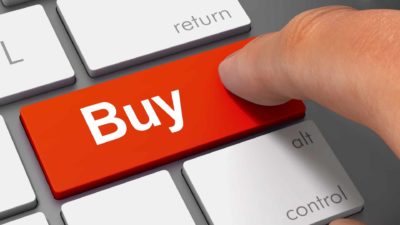It's just a number. And if we didn't have 10 fingers the latest Apple Inc. (NASDAQ: AAPL) share price move wouldn't be making global financial headlines this morning.
But we do have 10 fingers. And hence we long ago adopted the base 10 counting system. If you've ever watched young children doing their maths — or recall your own early days of addition and subtraction — that system makes imminent sense.
How does that tie into Apple's share price?
Yesterday, overnight Aussie time, Apple's share price nudged up another 0.13%. That was enough to see the company's market cap hit the magical US$2 trillion figure. A nice round base 10 figure we can all wrap our heads around to mark a new milestone. At least in US dollars. In Aussie dollars Apple is now valued at A$2.8 trillion.
To give you a better idea of Apple's explosive share price gains, its shares are up 120% since 20 August 2019. And despite plunging more than 30% during the COVID-19 market rout in February and March, Apple's share price has gained 54% year-to-date. And the shares are up a jaw-dropping 106% since its 23 March low.
Apple is now the most valuable listed company in world. Its annual revenue outstrips that of nations like Portugal. And its market cap is equivalent to the entire output (as measured by GDP) of Australia over the course of some 18 months.
So, following this stellar year, are Apple shares still a good buy?
After handily beating their revenue forecasts in their third quarter report (released on 30 July), I expect that, long-term, Apple shares are ones you may want to hold in your portfolio.
Which will be the first trillion-dollar ASX company?
The share prices of ASX-listed companies have a long way to run before hitting $1 trillion market caps. (We'll revert to Aussie dollars here.)
BHP Group Ltd (ASX: BHP) currently holds the reins as Australia's biggest public company, with a market cap of $197 billion. With the exception of the big pandemic selloff, BHP's share price has been in a solid upward trend since early 2016, up 154% since 22 January 2016. Over the past 12 months, the BHP share price is up 7%.
Rio Tinto Limited (ASX: RIO) comes in at number 2, with a market cap of $164 billion. Over the past 12 months, the Rio Tinto share price is up 18%.
But it's the current number 3 player that may be the first to crack the $1 trillion ceiling.
CSL Limited (ASX: CSL) has been steadily marching up the ranks, even as the big four banks have been losing ground. CSL's share price is up 29% since 20 August 2019, giving it a market cap of $142 billion.
CSL's share price slipped in late morning trading today. But that comes after a 6.4% gain yesterday, helping propel the S&P/ASX 200 Index (ASX: XJO) to a 0.7% gain and a 5-month high.
After the stellar COVID-19 rebound, can ASX share prices keep rising?
The vast majority of Australian shares have enjoyed remarkable gains since the pandemic panic selling flipped into bargain hunting. You need look no further than the 37% gains of All Ordinaries Index (ASX: XAO) to see what I mean.
The question on many investors minds now is, how much further does the rally have to run? Or worse, has the share market overshot and are we looking at another leg down?
Now I'm not much at reading tea leaves. And I don't have a working crystal ball. So, let's instead polish off our copper ball and see what that may tell us.
Why copper?
You may have heard the term 'Dr Copper'. That's because the copper price trends can very often give you a good indication of the health of the global economy. Copper is a vital metal in new construction, used in wiring. It's also a key element in electric vehicles.
And the price of copper is now up 16% over the past 12 months. And it's up 44% since 23 March (there's that date again!).
That certainly sounds like a healthy prognosis from Dr Copper on the growth prospects for the world economy. Which should spell good news for many ASX shares. Particularly, of course, the well-placed copper miners.
On the smaller end of the scale you've got companies like Aeris Resources Ltd (ASX: AIS), with a market cap of $88 million. Year-to-date, the Aeris share price is up 50%.
One of the larger companies producing copper is South Australia based OZ Minerals Limited (ASX: OZL), with a market cap of $4.7 billion. Oz Mineral's share price is up 38% so far in 2020.
OZ Minerals managing director Andrew Cole points out the huge demand from China as the nation continues on its massive building and infrastructure projects, as quoted by the Australian Financial Review:
With China's continued build out of their copper smelter capacity, they are hungry for copper supply. China doesn't have many copper natural resources to exploit so they have to buy it in, so unlike wine where they produce some locally, unlike coal where they have vast amounts of brown coal in country, I am less concerned about China potentially impacting the copper side of the industry.
Not even Dr Copper always gets its forecasts right. But it's certainly indicating the world is gearing up for a period of extended growth. And that should prove good news for the best placed ASX shares in every sector.









